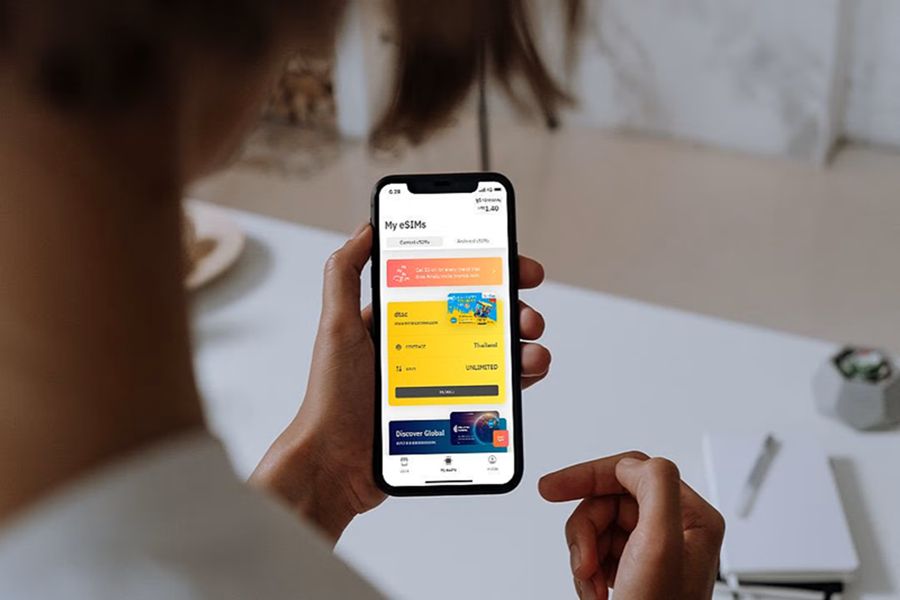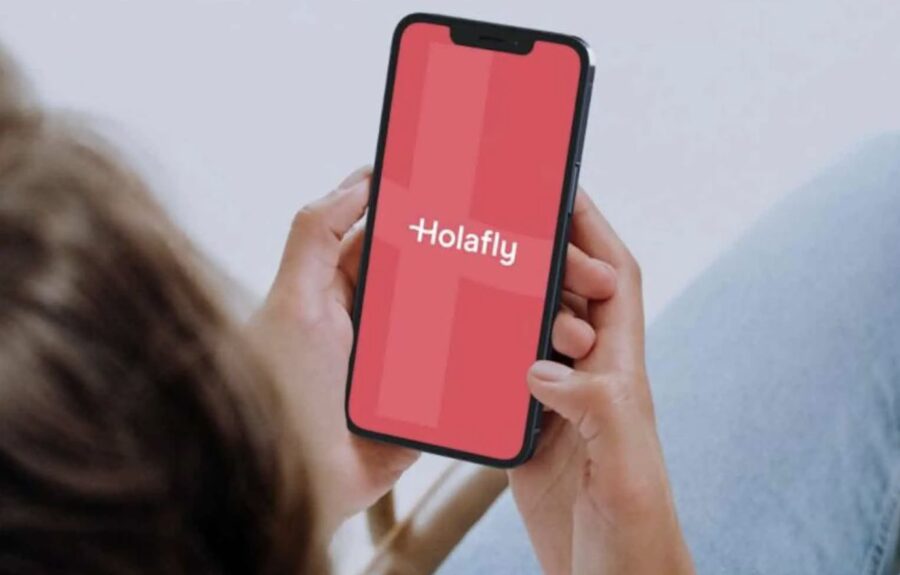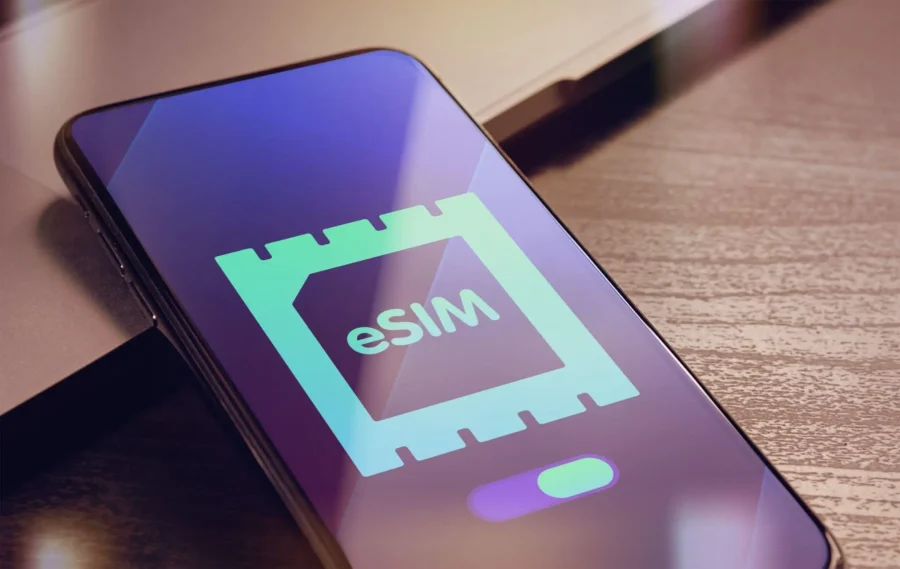
Local SIM vs eSIM Travel Europe: The Ultimate Guide for 2025
So, you’re planning a trip through Europe and you’re wondering how to stay connected without draining your wallet or wasting time you’d rather spend, well, actually enjoying Europe. You’re down to two main choices: grab a local SIM or go digital with an eSIM. If you want a quick setup and seamless coverage across borders, eSIMs usually make life easier — but for longer stays in one country, local SIMs can be cheaper and sometimes more reliable.
Honestly, I can’t tell you how many times I’ve landed somewhere new, ready to hit the streets, and ended up losing an hour searching for a phone shop. That’s when I started leaning into eSIMs — instant setup, no tiny SIM trays, no awkward store visits. Still, if you’re hanging out in one place for a bit, a local SIM can mean stronger rural signal and better data deals, especially if you’re booking last-minute tours and activities or making local calls.
The trick is matching your travel style to the right SIM. Are you country-hopping with a jam-packed itinerary, or are you settling into one city for a month? That answer shapes which SIM setup will keep you sane — and connected.
Table of Contents
- Key Takeaways
- Local SIM vs eSIM: Key Differences for European Travel
- How eSIM and Local SIM Cards Work
- Physical SIM Card vs Embedded SIM Technology
- Digital SIM Activation and Setup
- Pros and Cons of eSIM for Traveling Europe
- Instant Activation and Remote Setup
- Multi-Country Coverage with Travel eSIM
- Device Compatibility and Unlocked Phones
- Advantages and Limitations of Local SIM Cards in Europe
- Best Value for Extended Stays
- Local Numbers and Call Functionality
- Network Performance in Rural Areas
- Cost Comparison: eSIM vs Local SIM for European Travelers
- Upfront and Hidden Costs
- Data Plans and Pricing
- Top-Up and Recharging Options
- Best eSIM Providers for Europe: 2025 Edition
- Airalo: Budget-Friendly Multi-Country Plans
- Holafly: Unlimited Data for Digital Nomads
- Other Leading eSIM Providers
- Choosing the Right Option for Your Travel Style
- Short Trips and Multi-Country Itineraries
- Long-Term Stays and Digital Nomad Needs
- Tips for Smooth Connectivity Across Europe
- Frequently Asked Questions
- What are the advantages of using an eSIM over a physical SIM when traveling through Europe?
- How does signal strength compare between eSIMs and physical SIMs while abroad?
- Which eSIM providers offer the best coverage for international travelers in Europe?
- Can you rely on eSIMs for consistent connectivity during international travel?
- What should travelers be aware of when choosing between an eSIM and a physical SIM for their European journey?
- Are there any hidden benefits to using an eSIM for those frequently hopping between European countries?
- Book Your Dream Experience
- More Travel Guides
Key Takeaways
- eSIMs give you instant, multi-country coverage for short trips.
- Local SIMs usually win on value and signal for longer stays.
- Your route, trip length, and budget should drive your choice.
Local SIM vs eSIM: Key Differences for European Travel

When you’re bouncing between European countries, your choice between a local SIM card and an eSIM can really shape your trip. The main differences? It’s all about installation, setup, and the flexibility you get.
How eSIM and Local SIM Cards Work
A local SIM card is that tiny chip you pop into your phone. It hooks you up with a local carrier’s network, so you get local rates for calls, texts, and data.
An eSIM (embedded SIM) lives inside your phone’s hardware. Instead of swapping out a card, you download a mobile plan digitally. You can even do this before you leave home.
If you’re in France one week and Italy the next, eSIMs let you switch plans without tracking down a shop. But for longer stays in one country, local SIMs usually give you better data rates and a real local number for things like restaurant reservations.
Physical SIM Card vs Embedded SIM Technology
A physical SIM card means dealing with a SIM tray — maybe even a paperclip — and sometimes fumbling with it at a chilly train station in Prague. You can remove it, stash it, and use it in different devices.
An embedded SIM is built into your phone. You can’t physically remove it, but you can store multiple profiles. That’s handy for keeping your home number active while adding a European data plan.
Here’s a side-by-side look:
| Feature | Local SIM Card | eSIM |
|---|---|---|
| Installation | Physical insert | Digital download |
| Swapping | Manual | Instant via settings |
| Device compatibility | Works with most unlocked phones | Only on eSIM-enabled devices |
| Storage | Can remove and reuse | Profiles stored digitally |
Digital SIM Activation and Setup
Setting up a local SIM usually means tracking down a shop, showing your ID, and navigating a language you might not speak. You’ll get a little card with a PIN, then you swap it into your phone.
With an eSIM, you just scan a QR code or enter a code from your provider’s app. Activation takes a minute or two, and you’re online without ever touching your SIM tray.
I’ve landed in Berlin and had my eSIM up and running before my bag even hit the carousel. In smaller towns, though, local SIMs have given me better coverage. The setup can be slower, but once you’re sorted, you’re good for your stay.
Pros and Cons of eSIM for Traveling Europe

When you’re moving across Europe, how you get mobile data can really change your trip. eSIMs save time and skip the whole “buy a SIM in every country” routine, but they’re not perfect.
Instant Activation and Remote Setup
One of the best things about a travel eSIM is setting it up before you even leave home. Just scan a QR code or enter a code from your provider, and your phone downloads the plan — no messing with SIM trays in an airport café.
If you’ve landed late at night and had to hunt for a SIM shop, you know how nice this is. With eSIM, you step off the plane and you’re already set for maps, rideshares, or letting your family know you made it.
But you’ll need a stable internet connection for that first activation. If your phone is brand new or you’ve just reset it, you’ll need Wi-Fi. Some budget eSIM providers have clunky apps, too, so check reviews before you buy.
Multi-Country Coverage with Travel eSIM
A huge perk of eSIM in Europe is multi-country coverage. Many eSIM plans let you use the same data package across dozens of countries, so you don’t have to swap SIMs at every border.
You could start in France, train into Belgium, and then roll into the Netherlands — all without touching your phone’s SIM settings. That’s a real time-saver if you’re on a tight schedule.
Still, roaming handoffs don’t always go smoothly. Sometimes, when you cross a border, your phone takes a few minutes to find the new network. I’ve had navigation freeze mid-drive because of this, so now I always download offline maps as a backup. It’s not a dealbreaker, but it’s worth knowing if you depend on live navigation.
Device Compatibility and Unlocked Phones
Not every phone supports eSIM, unfortunately. Most newer iPhones, Google Pixels, and high-end Samsungs do, but some budget or older models don’t. Always double-check your phone’s specs before buying a plan.
You also need an unlocked phone. If your phone is locked to a carrier, you can’t use an eSIM from another provider. I see this trip up travelers who bought their phone on contract and forgot to unlock it before leaving.
If your phone is eSIM-ready and unlocked, you can even run your eSIM alongside your regular SIM. That way, you keep your home number active for calls and texts while using the eSIM for data — super handy for banking codes or emergency calls from home.
Advantages and Limitations of Local SIM Cards in Europe

If you’re traveling with an unlocked phone, a local prepaid SIM can be a solid way to stay connected in Europe. It can save you cash, give you a local number for calls, and sometimes offer stronger coverage in those remote corners. Still, it comes with a few hassles, especially if you’re country-hopping.
Best Value for Extended Stays
If you’re sticking around one country for a few weeks or more, a local SIM card usually beats eSIMs on price. Many European carriers offer prepaid bundles with generous data and local call minutes for €10–€20.
You’ll get better per-gigabyte rates compared to international roaming or multi-country eSIM packages. If you’re a heavy data user — streaming, maps, work calls — those savings add up.
The downside? You have to buy the SIM in person, show your ID, and sometimes fill out a quick form. In Spain or Italy, this can take 15–30 minutes. Not a big deal for a month-long stay, but kind of annoying for a weekend trip.
Tip: Make sure your phone’s unlocked so you can swap SIMs without drama.
Local Numbers and Call Functionality
A physical SIM card gives you something many eSIM data plans don’t: a real local number. That’s handy for booking restaurants, calling a taxi, or dealing with local businesses that ignore foreign numbers.
I’ve had hotels in rural France call me back instantly when I used a French number, but my UK number? Crickets. Some delivery apps in Europe also insist on a local number to verify your account.
The flip side: you might lose access to your home number unless your phone supports dual SIM or eSIM + SIM. That means you could miss calls or texts from home unless you’ve set up forwarding.
Network Performance in Rural Areas
In the countryside, a local prepaid SIM usually connects you right to the main national network. That means stronger signal in tiny villages, mountain roads, or those seaside towns you stumble into.
Driving through the Austrian Alps, my local SIM kept 4G coverage while my friend’s travel eSIM dropped to “No Service” in some valleys. Local carriers tend to prioritize their own customers.
Coverage still varies by provider, though. Always check a carrier’s coverage map before you buy. And in truly remote spots, even the best SIM won’t save you — so don’t expect five bars everywhere.
Cost Comparison: eSIM vs Local SIM for European Travelers

Prices swing a lot depending on where you land, how long you’re staying, and how much data you chew through. Some options seem cheaper upfront but sneak in extra fees, while others cost more at first but save you headaches later.
Upfront and Hidden Costs
When you buy a local SIM card in Europe, you usually pay for the SIM itself plus your first data plan. In many countries, that’s €5–€15 for the SIM and another €10–€30 for the plan.
A travel eSIM skips the physical card fee, but the data packages can cost more per GB. You also need an eSIM-compatible phone, which — let’s be honest — isn’t everyone.
Both have hidden costs. With a local SIM, you might need to show ID or spend time finding a shop. With an eSIM, you could get roaming-like rates if you pick the wrong region plan. And if you switch countries a lot, buying multiple local SIMs adds up fast.
| Cost Type | Local SIM Card | Travel eSIM |
|---|---|---|
| SIM purchase fee | Yes (€5–€15) | No |
| Data plan price | Lower | Higher |
| Setup convenience | Lower | Higher |
Data Plans and Pricing
Local SIMs usually offer better value per GB if you’re staying put for a while. In Italy or Spain, you might get 20GB for around €15 — tough to beat.
Travel eSIMs are all about flexibility. You buy one plan that works across borders, which is brilliant for a rail trip through France, Germany, and beyond. That convenience usually costs more, though — sometimes double the per-GB price of a local SIM.
Some eSIM providers sell short-term bundles, like 3GB for 7 days, which is fine for light users. But if you’re streaming or using maps all day, you’ll burn through that quickly and end up paying for more data.
Top-Up and Recharging Options
With a local SIM, you can top up in supermarkets, kiosks, or online. Sometimes you just hand cash to a shopkeeper and they load credit onto your number. It’s cheap and easy, but instructions might only be in the local language.
Travel eSIMs usually let you recharge right in their app with a card or PayPal. That’s quick, especially if you’re bouncing between countries and don’t want to hunt for a top-up shop.
One thing to watch: some eSIM plans expire if you don’t renew before they run out. Local SIMs often let you keep the number for months, even with no active data, which is handy if you plan to return to the same country.
Best eSIM Providers for Europe: 2025 Edition
Trying to stay connected as you bounce around Europe without juggling SIM cards? In 2025, a handful of eSIM providers really make life easier. Some lean toward affordable options for budget travelers, while others target folks who burn through data and need fast internet everywhere. Honestly, the right pick depends on how long you’re traveling, your style, and what you actually do with your phone.
Airalo: Budget-Friendly Multi-Country Plans

Airalo’s become a favorite for travelers who want one plan to cover most of Europe. I like that you can buy and activate it straight from their app before you even leave home. When you land, your phone just connects—no need to hunt down a shop or mess with SIM trays.
Their Eurolink and Europe packages cover 35–42 countries. You can hop from Spain to Germany to Italy, all on the same plan. Prices start at about $5 for 1GB, and topping up in the app is quick if you run low.
I’ve personally used Airalo on a two-week sprint through six countries. Everything worked fine in cities and smaller towns, though signal in remote mountains got a bit spotty—that’s pretty much par for the course. If you’re watching your spending but want one plan for the whole trip, Airalo’s tough to beat.
Holafly: Unlimited Data for Digital Nomads

Holafly’s a hit with digital nomads and anyone who needs to stream, upload, or Zoom without sweating over data limits. Their plans include unlimited data in up to 40 European countries, with fair use policies to keep things reasonable.
You can pick a plan for just a day or as long as a month. Prices start at about $6.90 per day—not the cheapest, but if you work online or stream a lot, it’s a lifesaver.
I appreciate that Holafly sends you a QR code for instant setup—scan, and you’re online in minutes. The catch? Most plans are data-only, so you’ll rely on WhatsApp or Skype for calls. But if you’d rather not think about data limits, Holafly’s a solid choice.
Other Leading eSIM Providers
There are a few more travel eSIM brands worth checking out if you want flexibility or have specific needs:
| Provider | Coverage | Starting Price | Best For |
|---|---|---|---|
| Nomad | 35–36 countries | ~$5 for 1GB | Flexible pricing, easy app management |
| Saily | 36 countries | ~$4.99 for 1GB | Frequent travelers, simple setup |
| GigSky | 44 countries | ~$5.99 for 1GB | High-speed data, customizable plans |
| Orange Travel eSIM | 35 countries | ~$5+ | Data + calls/SMS included |
Nomad’s flexibility works well if you like to adjust your plan on the fly. GigSky comes in handy if you’re splitting time between Europe and other continents. Orange Travel eSIM still bundles calls and texts with data, which is rare—super useful if you need a local number for reservations or deliveries.
Choosing the Right Option for Your Travel Style

Honestly, your best move depends on how long you’re staying, how often you’ll cross borders, and whether you care more about convenience or saving a few bucks. Some folks want instant setup before they even leave for the airport, while others don’t mind swapping SIMs for cheaper rates.
Short Trips and Multi-Country Itineraries
If you’re country-hopping every few days, an eSIM for travel can save you a ton of hassle. Buy and activate it before you board the plane, and you’ll land connected and ready to go. No need to hunt for phone shops or struggle with language barriers.
Many eSIM plans work across multiple countries, perfect for rail passes or budget flights zigzagging across Europe. You avoid swapping SIMs or, worse, losing your home card somewhere along the way.
For short city breaks, paying a little more for data is usually worth the time you save. If you’re booking last-minute flights with Skyscanner, having an eSIM means you can sort out transport and hotels on the fly—no scrambling for a new SIM at every stop.
Long-Term Stays and Digital Nomad Needs
If you’re settling in one country for a few weeks or months, a local SIM card usually makes more sense. You’ll get better rates on calls and data, since you’re paying local prices, not international package rates.
Digital nomads who need rock-solid, fast connections for work often find local SIMs more reliable than eSIM plans that piggyback on multiple networks. Plus, you get a local number, which comes in handy for deliveries, rentals, or setting up services.
You’ll need an unlocked phone and a bit of time to buy the SIM in person. If you just landed with luggage in tow, I’d recommend luggage storage so you’re not dragging bags around while searching for a plan.
Tips for Smooth Connectivity Across Europe
Before you leave, check if your phone supports eSIM—some older models just don’t. If it does, you can keep your home SIM active for calls or banking codes while using an eSIM for data.
For local SIMs, pack a SIM ejector or even a paperclip. Some countries ask for ID to buy a SIM, so keep your passport handy.
If you’re mixing eSIMs and local SIMs, map out your travel schedule and plan your coverage. Maybe start with an eSIM for the first few countries, then switch to a local SIM if you’re staying put. This hybrid approach can balance flexibility and cost, especially if you’re chasing deals from Going and moving frequently.
Frequently Asked Questions
When you’re trying to stay connected in Europe, it’s not just about price—it’s about how fast you can get online, how reliable your signal is, and how much hassle you’re willing to deal with.
Your choice also depends on how often you’re crossing borders and whether you want to keep your home number active while you travel.
What are the advantages of using an eSIM over a physical SIM when traveling through Europe?
With an eSIM, you can set up your plan before you even leave home. There’s no need to track down a phone shop at the airport or mess with tiny SIM trays in a noisy café.
You can switch between providers without swapping cards, which is handy if you spot a better deal mid-trip. If your phone supports dual profiles, you can keep your regular number active for calls and texts from home.
How does signal strength compare between eSIMs and physical SIMs while abroad?
Signal strength really comes down to the local carrier, not whether you’re using a physical SIM or an eSIM. If your eSIM plan connects to a major network in the country, you’ll get the same coverage as a local SIM from that provider.
Some budget eSIM plans rely on roaming agreements, so speeds can be a bit slower in rural areas compared to a true local SIM.
Which eSIM providers offer the best coverage for international travelers in Europe?
Airalo, Holafly, and Orange Travel eSIM cover dozens of European countries under one plan. I’ve had a great experience with Airalo’s Europe package—super convenient for jumping between cities without worrying about topping up everywhere.
If you need voice calls as well as data, Orange’s plan is one of the few that still includes them with texts.
Can you rely on eSIMs for consistent connectivity during international travel?
For most big cities and tourist spots, yes. I’ve used eSIMs all over France, Italy, and Germany without any real issues. Trains, airports, hotels—it all just works.
The only times I’ve run into spotty service have been in remote countryside areas, and honestly, that’s true for physical SIMs too.
What should travelers be aware of when choosing between an eSIM and a physical SIM for their European journey?
Double-check if your phone supports eSIM before you buy—people forget this all the time. Think about whether you need local calling, since many eSIM data plans skip that feature.
Physical SIMs can be cheaper for long stays in one country, but you’ll need to show ID and might have to navigate language barriers to get one.
Absolutely—one of the best perks is that you don’t need to hunt down a new SIM card every time you cross a border. With a solid regional eSIM, you just keep moving and your data keeps working, no drama.
Honestly, juggling a handful of those tiny plastic SIMs is a headache. I can’t count how many have disappeared into the depths of my bag or a hotel carpet.
If you’re someone who likes to plan less and wander more, an eSIM really lets you do that. You’ll avoid the usual scramble in airport kiosks or sketchy phone shops, and that’s a small freedom worth having.



